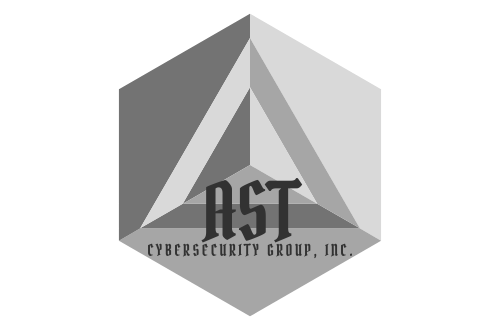In today’s digital age, where technology and communication play a vital role in the workplace, cyberbullying has become a concerning issue that affects employees across various industries. With the rise of online platforms and social media, the line between personal and professional lives has blurred, making it easier for cyberbullying to infiltrate the workplace.
Cyberbullying in the workplace refers to any form of harassment, intimidation, or humiliation that occurs through electronic means, such as emails, social media, instant messaging, or online forums. It can take many forms, including spreading rumors, making derogatory comments, or even sharing inappropriate or offensive content online.
The impact of cyberbullying on employees and organizations cannot be understated. It not only affects employee morale and productivity but also has severe implications for mental health and the overall reputation of the organization.
In this blog post, we will delve into the various aspects of cyberbullying in the workplace, from understanding its impact to identifying signs and implementing effective prevention and resolution strategies. We will also explore the legal ramifications of workplace cyberbullying and examine real-life case studies that highlight the importance of addressing this issue.
By gaining a deeper understanding of cyberbullying in the workplace and learning how to effectively address and prevent it, organizations can create a safe and respectful environment for their employees. Let’s embark on this journey together to combat cyberbullying and foster a healthier and more harmonious workplace culture.
Introduction: Defining Cyberbullying in a Workplace Context
Cyberbullying has become a prevalent issue in today’s digital world, and its impact is not limited to schools or personal relationships. It has also found its way into the workplace, creating a hostile and toxic environment for employees. In this section, we will define cyberbullying in the context of the workplace and explore its various manifestations.
What is Cyberbullying in the Workplace?
Cyberbullying in the workplace can be defined as the deliberate and repetitive use of digital communication tools to intimidate, harass, or humiliate an individual or group of individuals within a professional setting. It involves the use of technology, such as emails, social media platforms, instant messaging, or online forums, to perpetrate abusive behavior.
Differentiating Cyberbullying from Other Workplace Conflicts
It is crucial to understand the distinction between cyberbullying and other forms of workplace conflicts, such as interpersonal disagreements or constructive criticism. Cyberbullying involves a power imbalance, where the aggressor seeks to exert control and dominate the victim through repeated and malicious online actions.
Forms of Cyberbullying in the Workplace
Cyberbullying can take various forms, each with its own unique characteristics and impact on the victim. Some common forms of workplace cyberbullying include:
- Harassment: Sending offensive or threatening messages, emails, or comments to an individual with the intention of causing distress or harm.
- Rumor-spreading: Spreading false or damaging information about a colleague through online channels, tarnishing their reputation and credibility.
- Exclusion or isolation: Deliberately excluding or isolating an individual from online conversations, meetings, or social events, leading to feelings of alienation and marginalization.
- Impersonation: Creating fake online profiles or using someone else’s identity to spread false information or engage in abusive behavior.
- Public humiliation: Posting derogatory comments, images, or videos about an individual publicly, leading to embarrassment and shame.
Understanding the various forms of cyberbullying helps organizations and employees recognize and address these behaviors effectively.

Impact of Cyberbullying on Workplace Dynamics
Cyberbullying in the workplace can have detrimental consequences for both the individual and the organization as a whole. Some of the key impacts include:
- Employee morale and productivity: Victims of cyberbullying experience heightened stress levels, decreased job satisfaction, and reduced productivity, which can negatively affect the overall work environment.
- Mental health implications: Cyberbullying can lead to anxiety, depression, and other mental health issues for the victims, impacting their overall well-being and ability to perform their job effectively.
- Organizational reputation: If cyberbullying incidents become public or are known within the industry, it can damage the reputation and credibility of the organization, leading to decreased trust from clients, partners, and potential hires.
By understanding the various aspects and impacts of cyberbullying in the workplace, organizations can take proactive steps to prevent and address such behavior, fostering a healthier and more inclusive work environment for all employees.
Understanding the Impact of Cyberbullying in the Workplace
Cyberbullying in the workplace can have far-reaching consequences, affecting not only the targeted individuals but also the overall dynamics and functioning of the organization. In this section, we will delve into the various ways in which cyberbullying impacts employee morale, productivity, mental health, and the reputation of the organization.
Effects on Employee Morale and Productivity
- Decreased job satisfaction: Employees who experience cyberbullying often feel demoralized and dissatisfied with their work environment. The constant fear and anxiety associated with online harassment can significantly impact their overall job satisfaction.
- Reduced motivation and engagement: Cyberbullying creates a hostile work environment that can diminish employees’ motivation and engagement levels. They may become disinterested in their work, leading to decreased productivity and subpar performance.
- Increased turnover rates: Continual exposure to cyberbullying can drive employees to seek employment elsewhere. High turnover rates not only disrupt the workflow but also increase recruitment and training costs for the organization.
Impacts on Mental Health
- Stress and anxiety: Cyberbullying places significant stress on the victims, causing heightened levels of anxiety and distress. The constant fear of further harassment can lead to a decline in mental well-being and overall emotional stability.
- Depression and isolation: Prolonged exposure to cyberbullying can contribute to feelings of depression and isolation. Victims may withdraw from social interactions, both online and offline, leading to a sense of loneliness and a decline in mental health.
- Impaired self-esteem and self-confidence: Cyberbullying can erode an individual’s self-esteem and self-confidence. The relentless negative feedback and derogatory comments can undermine their belief in their abilities and worth, impacting their professional growth and advancement.
Implications for Organizational Reputation
- Negative public perception: If instances of cyberbullying within the workplace become public or are known within the industry, it can tarnish the organization’s reputation. Potential clients, partners, and job applicants may view the company as toxic and unprofessional, leading to a loss of trust and credibility.
- Difficulty attracting and retaining talent: Organizations with a reputation for tolerating or ignoring cyberbullying struggles to attract and retain top talent. Prospective employees are more likely to seek opportunities with companies that prioritize a safe and respectful work environment.
- Legal and financial implications: Workplace cyberbullying that goes unaddressed can result in costly legal battles, leading to financial repercussions for the organization. Legal fees, settlements, and potential damage to the brand can significantly impact the overall financial health of the company.
Understanding the wide-ranging impact of cyberbullying in the workplace underscores the importance of taking proactive measures to address and prevent such behavior. By prioritizing employee well-being, organizations can create a positive and supportive work environment that fosters productivity, loyalty, and a strong organizational reputation.
Identifying Signs of Cyberbullying in the Workplace
Identifying signs of cyberbullying in the workplace is crucial for organizations to intervene promptly and provide support to affected individuals. In this section, we will explore the different indicators and behaviors that may signal the presence of cyberbullying, including recognizing the types of cyberbullying behaviors, identifying victims and perpetrators, and recognizing the indicators of a toxic work environment.
Types of Cyberbullying Behaviors
- Harassment: Persistent sending of offensive or threatening messages, emails, or comments with the intention of causing distress or harm to the recipient.
- Cyberstalking: Continuously monitoring and tracking an individual’s online activities, invading their privacy, and using the gathered information to intimidate or harass them.
- Impersonation: Creating fake online profiles or using someone else’s identity to spread false information, engage in abusive behavior, or tarnish the victim’s reputation.
- Public humiliation: Posting derogatory comments, images, or videos about an individual publicly, with the intention of embarrassing or shaming them.
- Exclusion or isolation: Deliberately excluding or isolating an individual from online conversations, meetings, or social events, creating a sense of alienation and marginalization.
Identifying Victims and Perpetrators
- Victims of cyberbullying may exhibit signs such as:
- Increased anxiety or fearfulness regarding online interactions or technology use.
- Avoidance of social interactions, both online and offline.
- Changes in behavior, such as becoming withdrawn or displaying signs of depression.
- Decreased productivity or performance at work.
- Expressing feelings of helplessness or hopelessness.
- Unexplained physical symptoms, such as headaches or stomachaches.
- Perpetrators of cyberbullying may display the following behaviors:
- Engaging in online activities that demean, threaten, or humiliate their colleagues.
- Showing a pattern of abusive behavior towards specific individuals.
- Exhibiting a desire for control and power over their victims.
- Using anonymous accounts or fake profiles to carry out cyberbullying without being easily identified.
Recognizing the Indicators of a Toxic Work Environment
- High levels of tension and conflict: A toxic work environment may be characterized by constant conflicts, disagreements, and tension among employees, creating a hostile atmosphere.
- Lack of trust and respect: A toxic work environment often lacks mutual trust and respect among colleagues, with individuals engaging in gossip, backstabbing, or other negative behaviors.
- Fear of retaliation: Employees may hesitate to report or speak up about cyberbullying incidents due to a fear of retaliation or reprisal from the perpetrators or even their superiors.
- Increased absenteeism and turnover: A toxic work environment can result in higher rates of employee absenteeism and turnover as individuals seek to escape the negative atmosphere.
By being vigilant and attentive to these signs, organizations can identify and address cyberbullying issues promptly, creating a safer and more supportive work environment for their employees.
Preventing and Addressing Cyberbullying in the Workplace
Preventing and addressing cyberbullying in the workplace requires a proactive approach from organizations. In this section, we will explore effective strategies to prevent cyberbullying, including establishing a clear anti-cyberbullying policy, implementing training and awareness programs, and creating reporting and conflict resolution mechanisms.
Establishing a Clear Anti-Cyberbullying Policy
- Policy development: Organizations should develop a comprehensive anti-cyberbullying policy that clearly defines what constitutes cyberbullying, outlines the consequences for engaging in such behavior, and emphasizes the organization’s commitment to maintaining a safe and respectful work environment.
- Communicating the policy: The policy should be communicated to all employees regularly and made easily accessible through employee handbooks, intranet platforms, or other internal communication channels. This ensures that everyone is aware of the expectations and consequences related to cyberbullying.
- Zero-tolerance approach: The policy should emphasize a zero-tolerance approach towards cyberbullying, demonstrating the organization’s commitment to taking immediate action when incidents occur.
Training and Awareness Programs
- Cyberbullying awareness training: Organizations should provide training to all employees to increase their awareness and understanding of cyberbullying, its impact, and the importance of preventing and addressing such behavior. This training can include real-life case studies, interactive discussions, and practical tips for creating a respectful online environment.
- Promoting empathy and respectful communication: Training programs should also focus on promoting empathy, respectful communication, and digital etiquette. By fostering a culture of empathy and kindness, organizations can reduce the likelihood of cyberbullying incidents.
- Training for managers and supervisors: Managers and supervisors should receive additional training on how to recognize and address cyberbullying effectively. They should be equipped with the skills to handle reports, mediate conflicts, and support affected employees.
Implementing Reporting and Conflict Resolution Mechanisms
- Anonymous reporting channels: Organizations should establish anonymous reporting channels, such as designated email addresses or hotlines, where employees can report incidents of cyberbullying without fear of retaliation. It should be made clear that reports will be taken seriously and investigated promptly.
- Confidentiality and privacy: Ensuring confidentiality and privacy during the reporting and investigation process is crucial to encourage employees to come forward without hesitation. Clear procedures should be in place to protect the identities of both the victims and the reporters.
- Prompt investigation and action: Organizations should conduct thorough investigations into reported incidents of cyberbullying and take appropriate action against the perpetrators. This may include disciplinary measures, counseling, or further training.
- Mediation and conflict resolution: In cases where cyberbullying involves interpersonal conflicts, organizations should provide mediation services to facilitate open communication and resolution. Trained mediators can help parties involved in conflicts reach mutually satisfactory solutions.
By implementing these preventive measures and establishing effective reporting and resolution mechanisms, organizations can foster a culture of respect, empathy, and accountability, thereby mitigating the risk of cyberbullying in the workplace.

Legal Ramifications of Workplace Cyberbullying
Workplace cyberbullying can have significant legal implications for both employers and employees. In this section, we will explore the legal responsibilities related to workplace cyberbullying, potential legal consequences, and provide real-life case studies that highlight the importance of addressing this issue.
Understanding Legal Responsibilities
- Duty of care: Employers have a legal duty to provide a safe and healthy work environment for their employees. This duty extends to addressing and preventing workplace cyberbullying.
- Employment laws: Workplace cyberbullying can violate various employment laws, including anti-discrimination laws, harassment laws, and occupational health and safety regulations. Employers must ensure compliance with these laws to avoid legal repercussions.
- Privacy laws: Cyberbullying incidents may involve the misuse of personal information or invasion of privacy, potentially violating privacy laws. Employers must respect and protect employees’ privacy rights.
Potential Legal Consequences for Employers and Employees
- Civil liability: Employers may face civil lawsuits filed by victims of cyberbullying, alleging negligence, emotional distress, or failure to provide a safe work environment. Damages awarded in such cases can be substantial.
- Vicarious liability: Employers can be held vicariously liable for the actions of their employees if the cyberbullying occurs within the scope of employment. This means that employers may be legally responsible for the actions of their employees, even if they were not directly involved in the cyberbullying.
- Criminal liability: In extreme cases, cyberbullying may involve criminal offenses, such as harassment, stalking, or defamation. Perpetrators can face criminal charges, leading to fines, probation, or even imprisonment.
Case Studies of Legal Action Against Workplace Cyberbullying
- The case of Jane vs. ABC Corporation: Jane, an employee, experienced severe cyberbullying from a coworker through anonymous emails and social media messages. Jane filed a lawsuit against the company, claiming that they had failed to address the cyberbullying and provide a safe work environment. The court found the company negligent and awarded substantial damages to Jane.
- The case of John vs. XYZ Company: John, an employee, was falsely accused of professional misconduct through anonymous online posts. The company conducted a thorough investigation, identified the perpetrator, and terminated their employment. The perpetrator faced criminal charges for defamation, resulting in fines and probation.
These case studies highlight the legal consequences that employers and employees may face when workplace cyberbullying is not adequately addressed. It emphasizes the importance of implementing preventive measures, enforcing policies, and taking swift action to create a safe and legally compliant work environment.
By understanding the legal ramifications of workplace cyberbullying, employers can take proactive steps to mitigate risks, protect their employees, and uphold their legal obligations.
Conclusion: Creating a Safe and Respectful Workplace Environment
Creating a safe and respectful workplace environment is essential to address and prevent cyberbullying effectively. In this final section, we will summarize the key points discussed throughout this blog post and emphasize the importance of fostering a positive work culture.
The Importance of Addressing Cyberbullying
- Employee well-being: Cyberbullying can have significant negative impacts on the mental health, job satisfaction, and productivity of employees. By addressing cyberbullying, organizations prioritize the well-being of their workforce.
- Organizational reputation: Failure to address cyberbullying can damage the reputation and credibility of the organization, leading to negative perceptions from clients, partners, and potential employees.
- Legal consequences: Workplace cyberbullying can result in legal liabilities for employers, including civil lawsuits, vicarious liability, and potential criminal charges.
Strategies for Creating a Safe and Respectful Workplace
- Establish clear policies: Organizations should develop and communicate a comprehensive anti-cyberbullying policy, emphasizing a zero-tolerance approach and outlining the consequences for engaging in such behavior.
- Training and awareness: Conduct regular training programs to increase employee awareness of cyberbullying, promote empathy, respectful communication, and digital etiquette.
- Reporting and resolution mechanisms: Implement anonymous reporting channels and ensure prompt and thorough investigations of reported incidents. Provide mediation and conflict resolution services to address interpersonal conflicts associated with cyberbullying.
- Support and counseling: Offer support services, such as counseling or employee assistance programs, to help victims of cyberbullying cope with the emotional impacts and provide resources for recovery.
- Foster a positive work culture: Promote a culture of respect, inclusivity, and empathy throughout the organization. Encourage open communication, collaboration, and mutual support among employees.
The Role of Leadership
Leadership plays a crucial role in creating a safe and respectful workplace. By leading by example, enforcing policies, and prioritizing employee well-being, leaders can set the tone for a positive work environment and actively prevent cyberbullying.
In conclusion, understanding and addressing cyberbullying in the workplace is vital for creating a safe, healthy, and productive work environment. By implementing preventive measures, providing support to victims, and holding perpetrators accountable, organizations can foster a culture of respect and empathy. Let us work together to combat cyberbullying and create workplaces where everyone feels valued, respected, and protected.
Contact AST Cybersecurity today to learn more about cyberbullying in the workplace and more!

